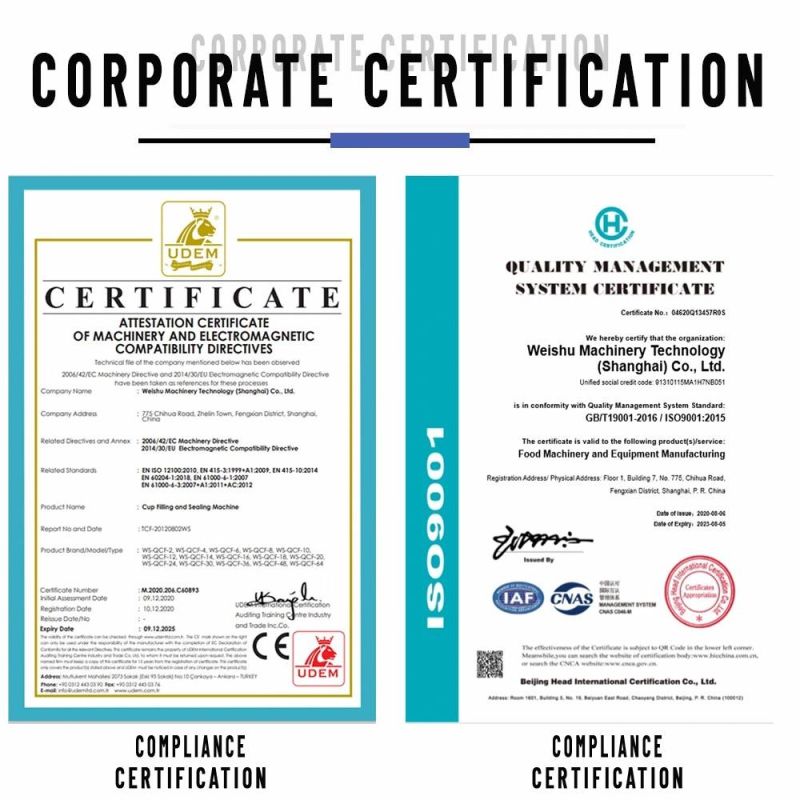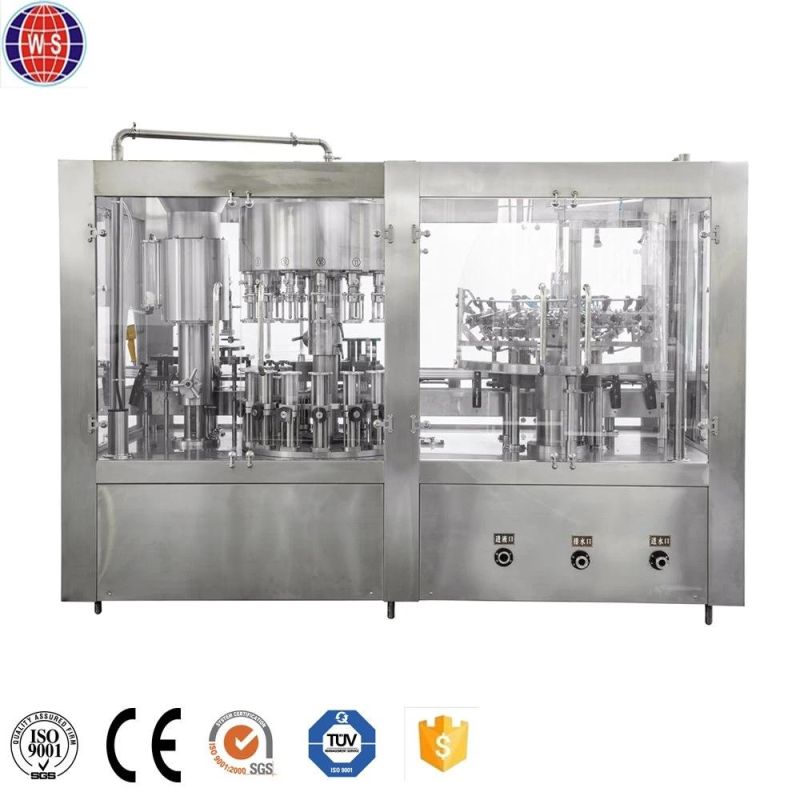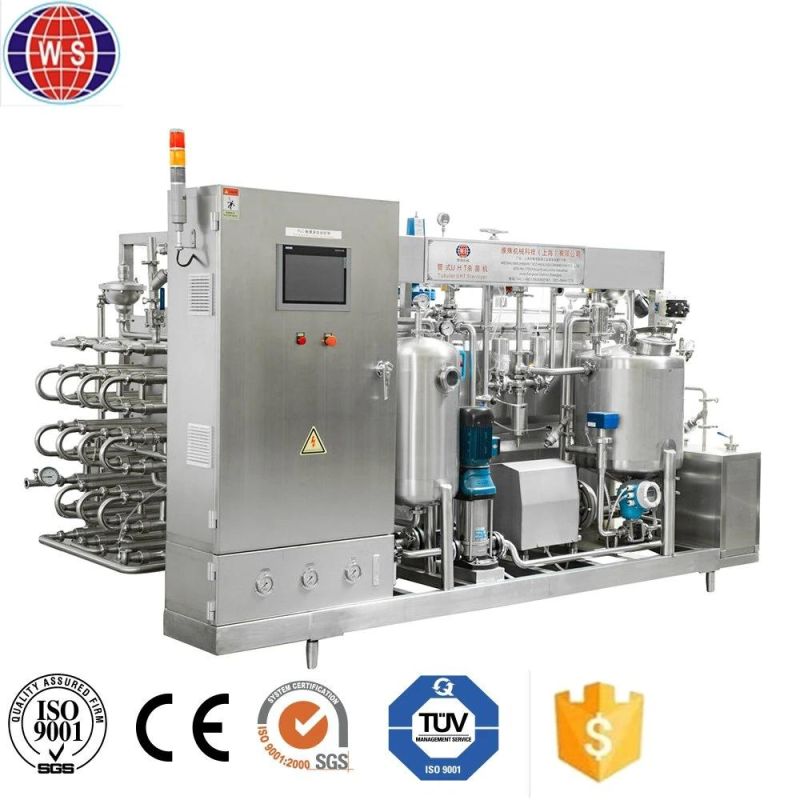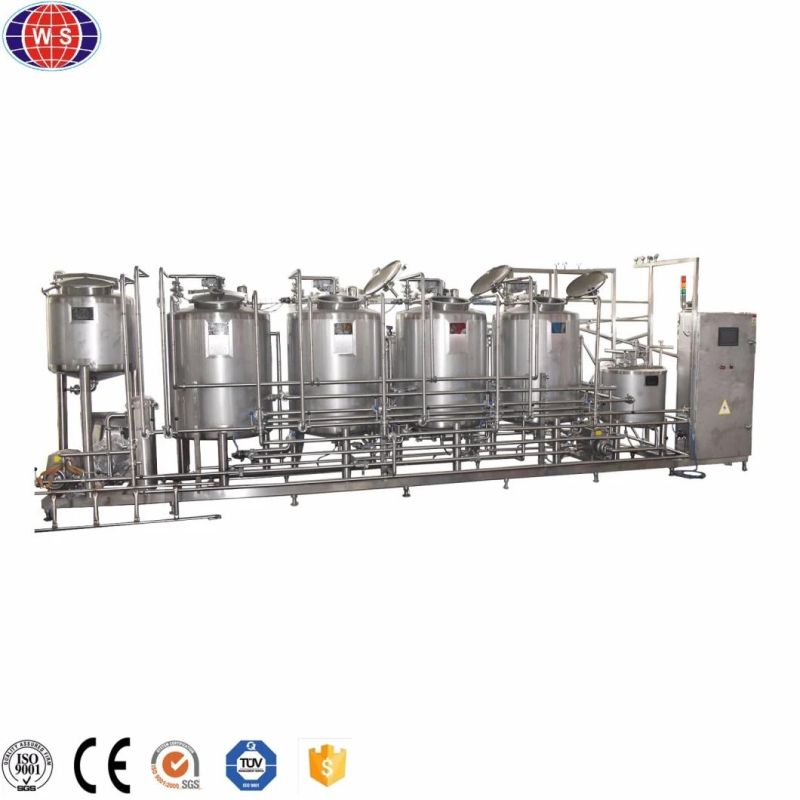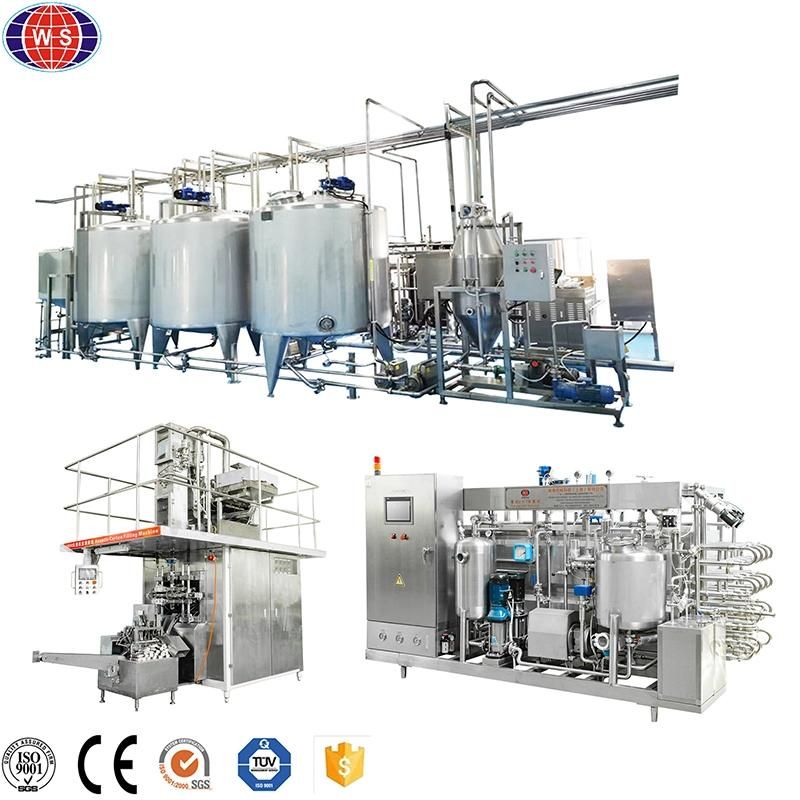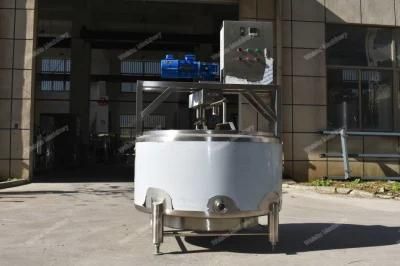
Capacity Customized Cheese Making Equipment Mozzarella Cheese Making Machine
Weishu Machinery Technology (Shanghai) Co., Ltd.- After-sales Service:Online Video Aftersales Service
- Warranty:1 Year
- Process:Thermal Processing
- Power Source:Steam or Electric
- Certification:ISO9001
- Automatic Grade:Semi-Automatic
Base Info
- Model NO.:WS-NL
- Application:Milk, Yogurt, Cheese
- Customized:Customized
- Material:304
- Weight:120kg-1900kg
- Dimension:According to Volume
- Raw Material:Milk
- Voltage:Customization Accepted
- Transport Package:Plastic Film
- Specification:According to volume
- Trademark:WS
- Origin:Shanghai, China
- Production Capacity:100sets,Month
Description
Basic Info.
Model NO. WS-NL Application Milk, Yogurt, Cheese Customized Customized Material 304 Weight 120kg-1900kg Dimension According to Volume Raw Material Milk Voltage Customization Accepted Transport Package Plastic Film Specification According to volume Trademark WS Origin Shanghai, China Production Capacity 100sets/MonthProduct Description
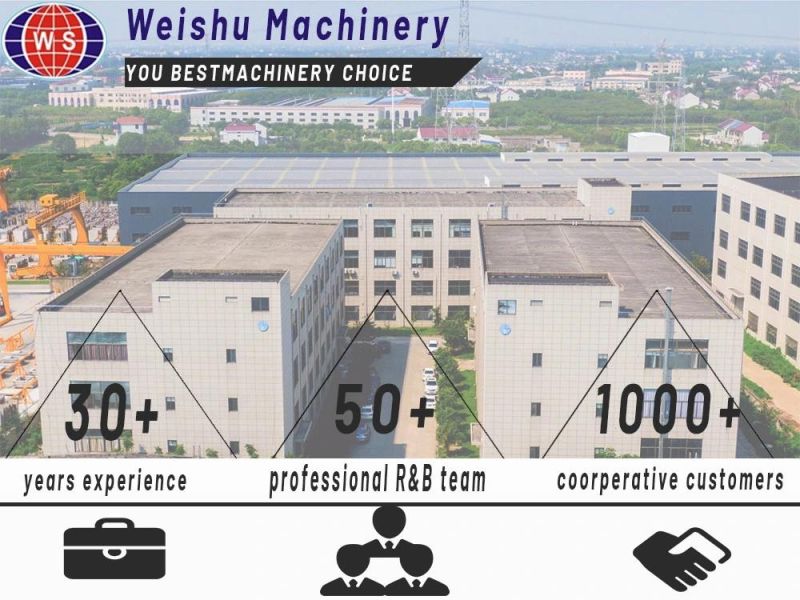
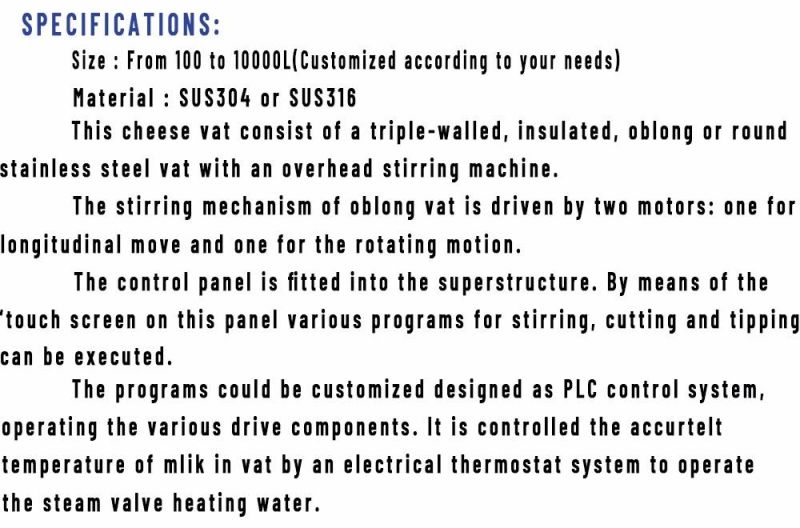
Production details:
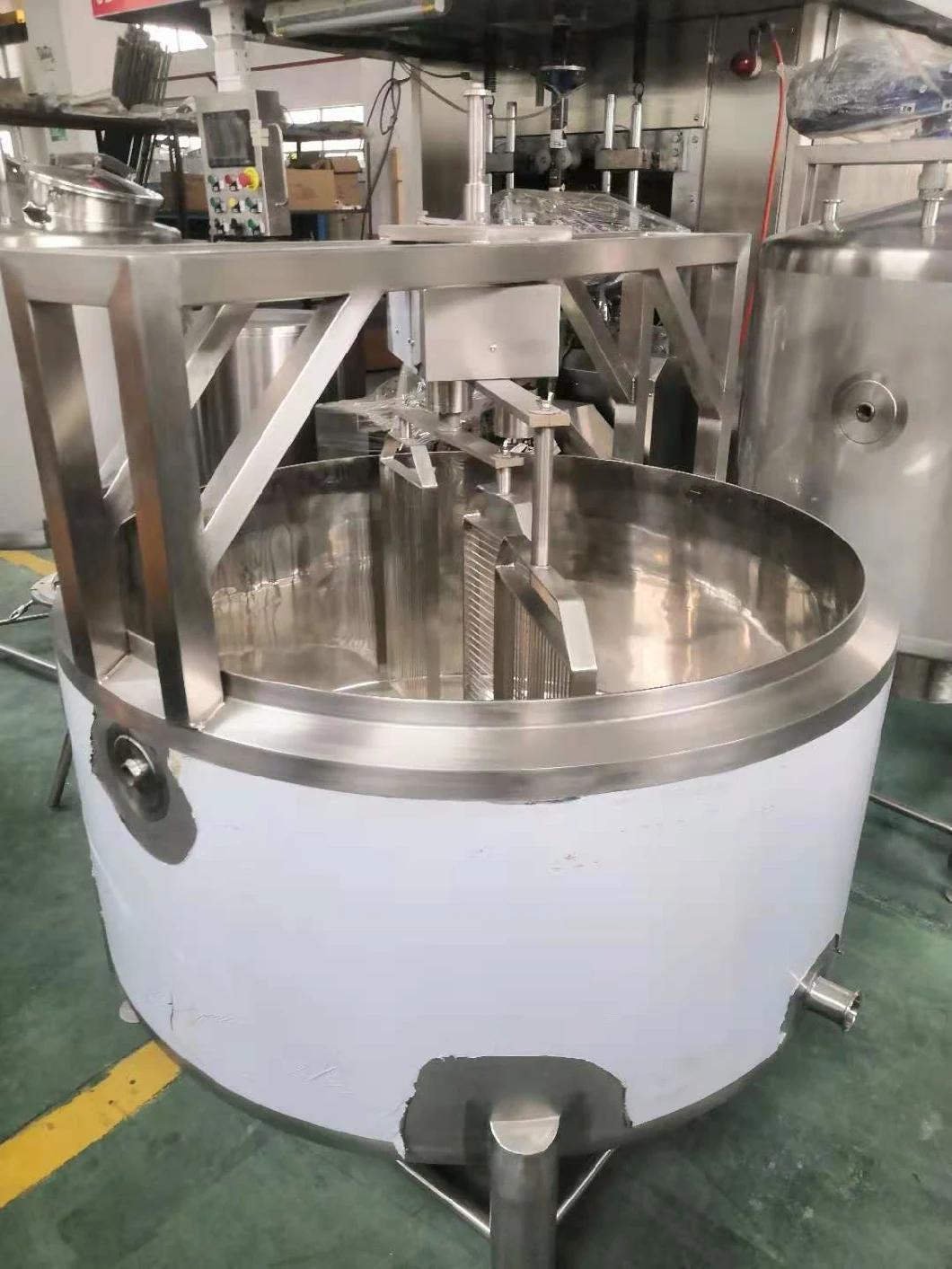
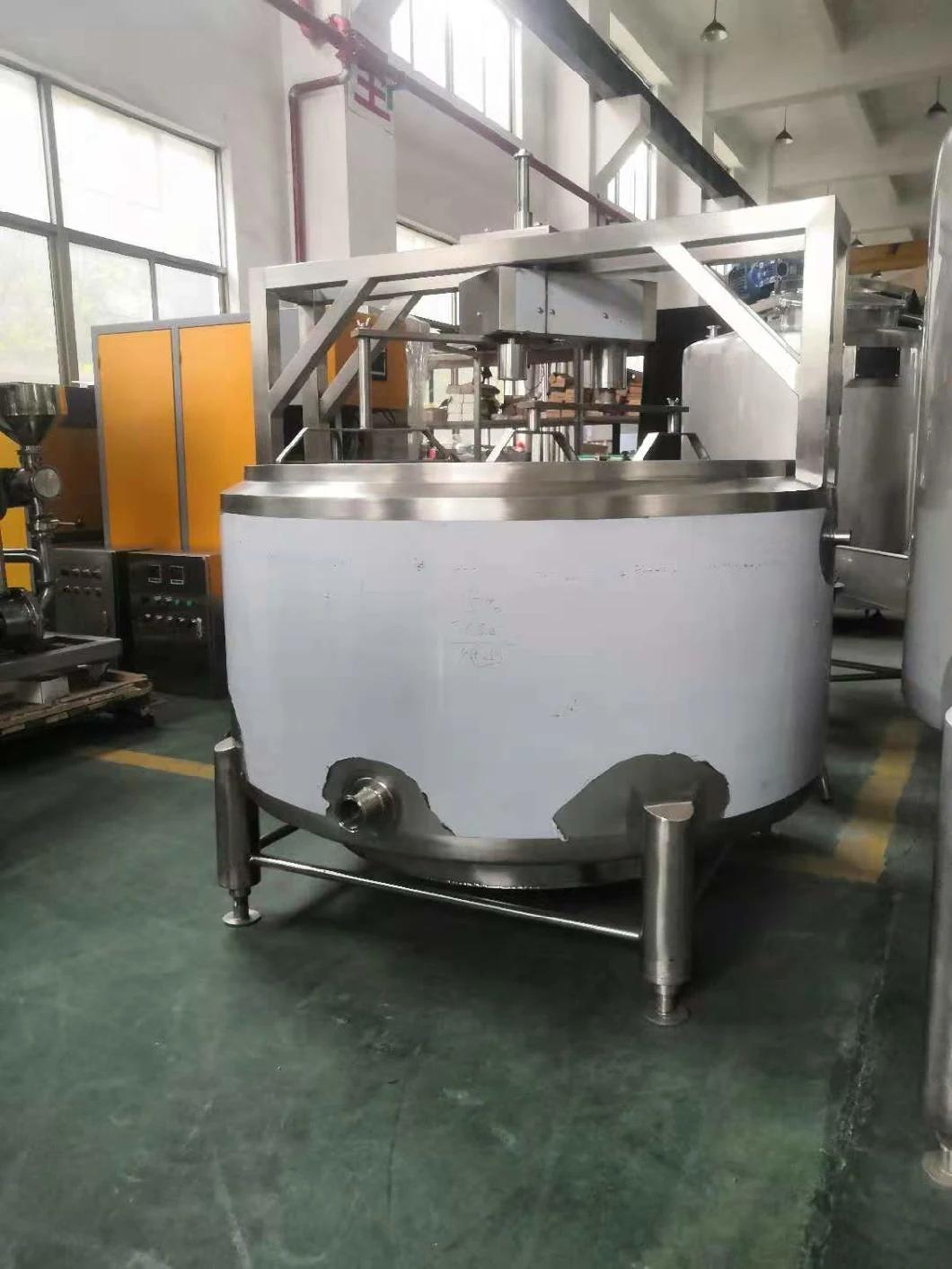

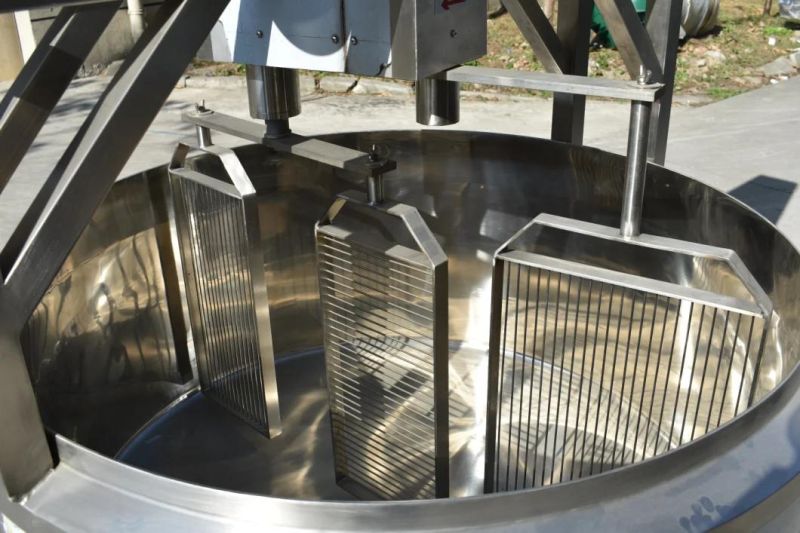
Cheese vat: a round vat in which the curd is formed and cut or broken in cheese making.
Structure: three layers stainless steel tank, Overhead Agitator, Control box/panel, Adjustable foot.
Control box/panel: control the heating temperature&holding time and the start and stop of the mixing motor.
Agitator driven by two motors: one motor for stirring blade Rotary motion, one motor for stirring blade Longitudinal motion(three stirring paddles)
| Model | WS-NLC |
| Volume | 100-2000L |
| Agitator | 36rpm |
| Application | Cheese/Milk/Yogurt processing |
| Stirring speed | 36rpm |
| Insulation material | polyester foam |
| Insulation thickness | 50mm~70mm |
| Default power system | 220V/1P/50 Hz or 380V/3P/50Hz, it can be customized. |
The cheese milk is pre-treated, possibly pre-ripened after addition of a bacteria culture appropriate to the type of cheese,and mixed with rennet. The enzyme activity of the rennet causes the milk to coagulate into a solid gel known as coagulum.
This is cut with special cutting tools into small cubes of the desired size - primarily to facilitate expulsion of whey.
During the rest of the curdmaking process, the bacteria grow and multiply and form lactic acid from the lactose. The curd grains are subjected to mechanical treatment with stirring tools, while at the same time the curd is heated, according to a pre-set program. The combined effect of these three actions - growth of bacteria, mechanical treatment and heat treatment - results in syneresis, i.e. expulsion of whey from the curd grains. The finished curd is placed in cheese moulds,mostly made of plastic, which determine the shape and size of the finished cheese.
The cheese is pressed, either by its own weight or more commonly by applying pressure to the moulds. Treatment during curdmaking, pressing, brining and storage conditions determines the characteristics of the cheese.
Finally, the cheese is coated, wrapped or packed.